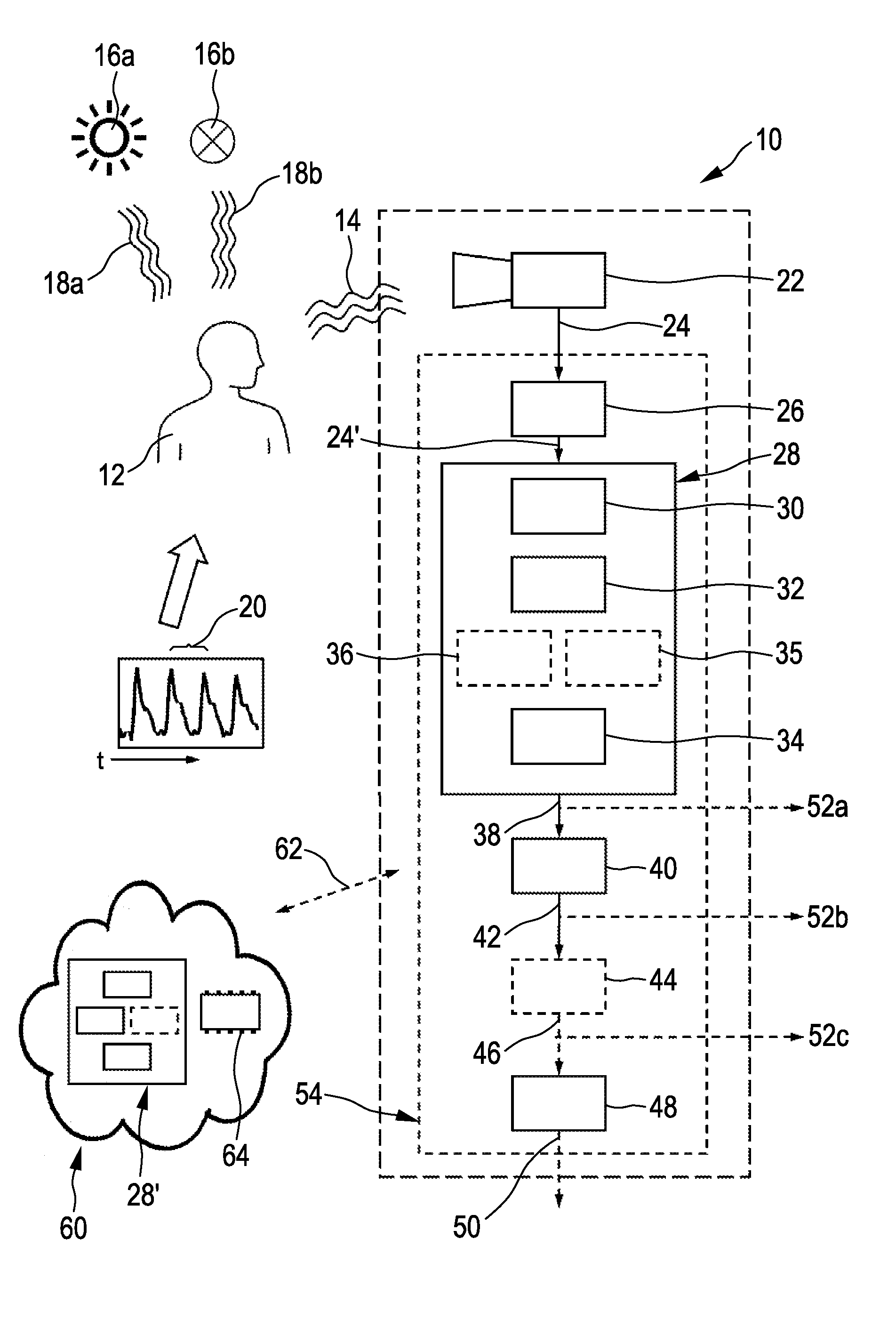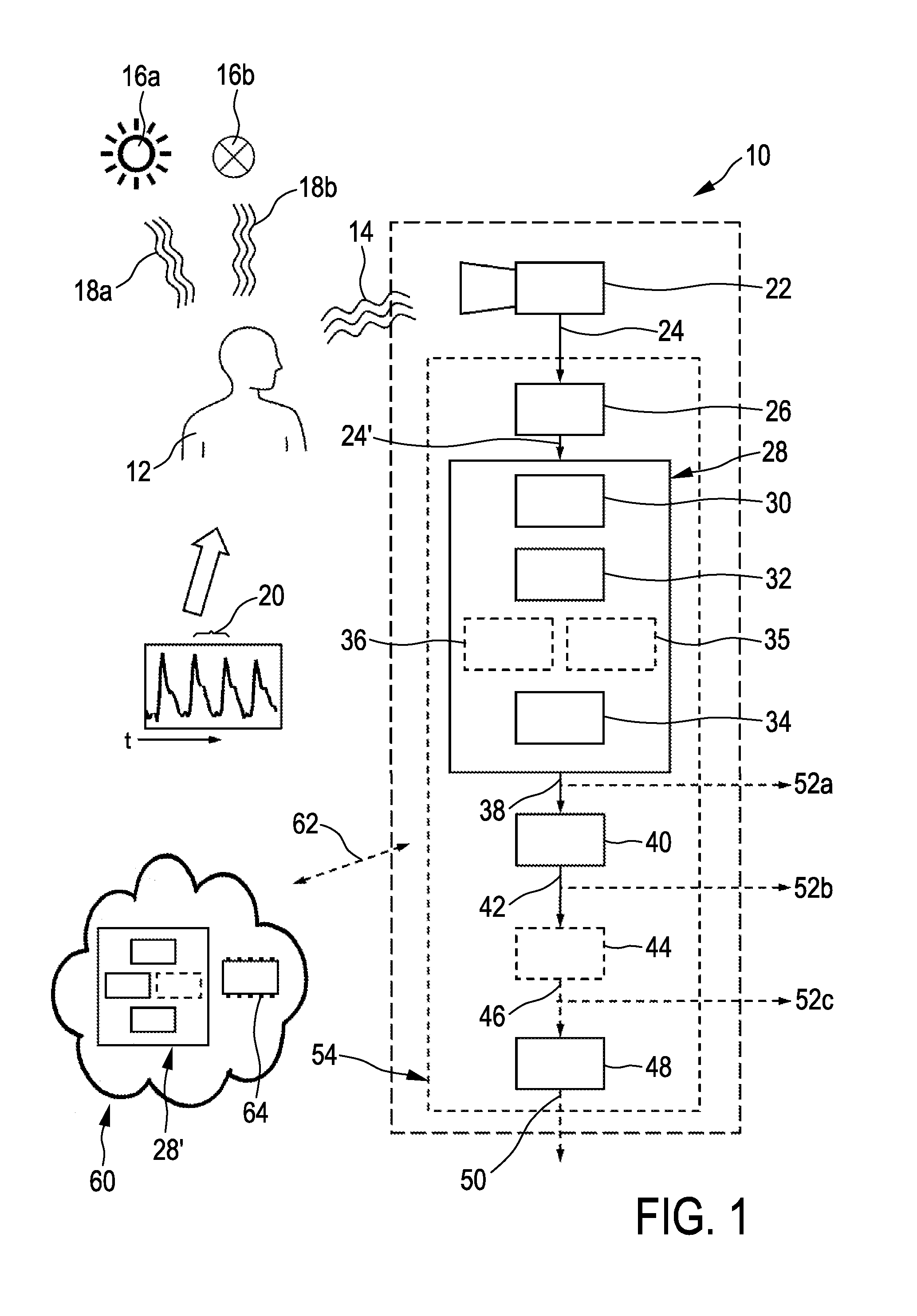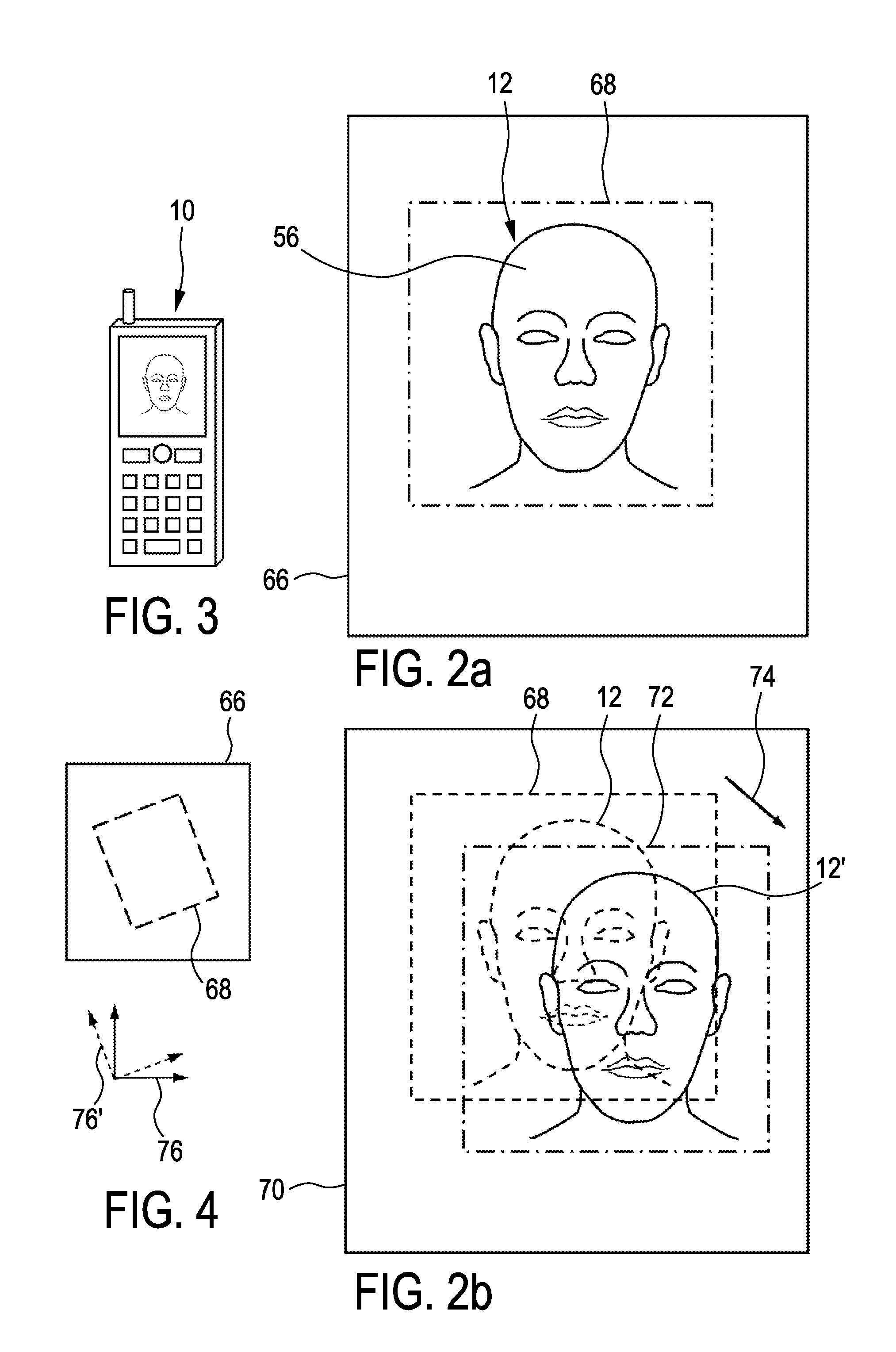Device and method for extracting information from remotely detected characteristic signals
a technology for detecting characteristics and devices, applied in the field of devices and methods for extracting information from remotely detected characteristic signals, can solve the problems of insufficient computing power for mobile device applications, the inability to accurately extract desired signals, and the inability to process data in several environments, so as to achieve the effect of reducing computing efforts and high accuracy
- Summary
- Abstract
- Description
- Claims
- Application Information
AI Technical Summary
Benefits of technology
Problems solved by technology
Method used
Image
Examples
Embodiment Construction
[0092]The following section describes exemplary approaches to remote photoplethysmography utilizing several aspects of the device and method of the invention. It should be understood that single steps and features of the shown approaches can be extracted from the context of the respective overall approach. These steps and features can be therefore part of separate embodiments still covered by the scope of the invention.
[0093]FIG. 1 shows a schematic illustration of a device for extracting information which is denoted by a reference numeral 10. For instance, the device 10 can be utilized for recording image frames representing a remote object 12 for remote PPG monitoring. The image frames can be derived from electromagnetic radiation 14 emitted or reflected by the object 12. The object 12 can be a human being or animal, or, in general, a living being. Furthermore, the object 12 can be part of a human being highly indicative of a desired signal, e.g. a face portion or, in general, a s...
PUM
 Login to View More
Login to View More Abstract
Description
Claims
Application Information
 Login to View More
Login to View More - R&D
- Intellectual Property
- Life Sciences
- Materials
- Tech Scout
- Unparalleled Data Quality
- Higher Quality Content
- 60% Fewer Hallucinations
Browse by: Latest US Patents, China's latest patents, Technical Efficacy Thesaurus, Application Domain, Technology Topic, Popular Technical Reports.
© 2025 PatSnap. All rights reserved.Legal|Privacy policy|Modern Slavery Act Transparency Statement|Sitemap|About US| Contact US: help@patsnap.com



